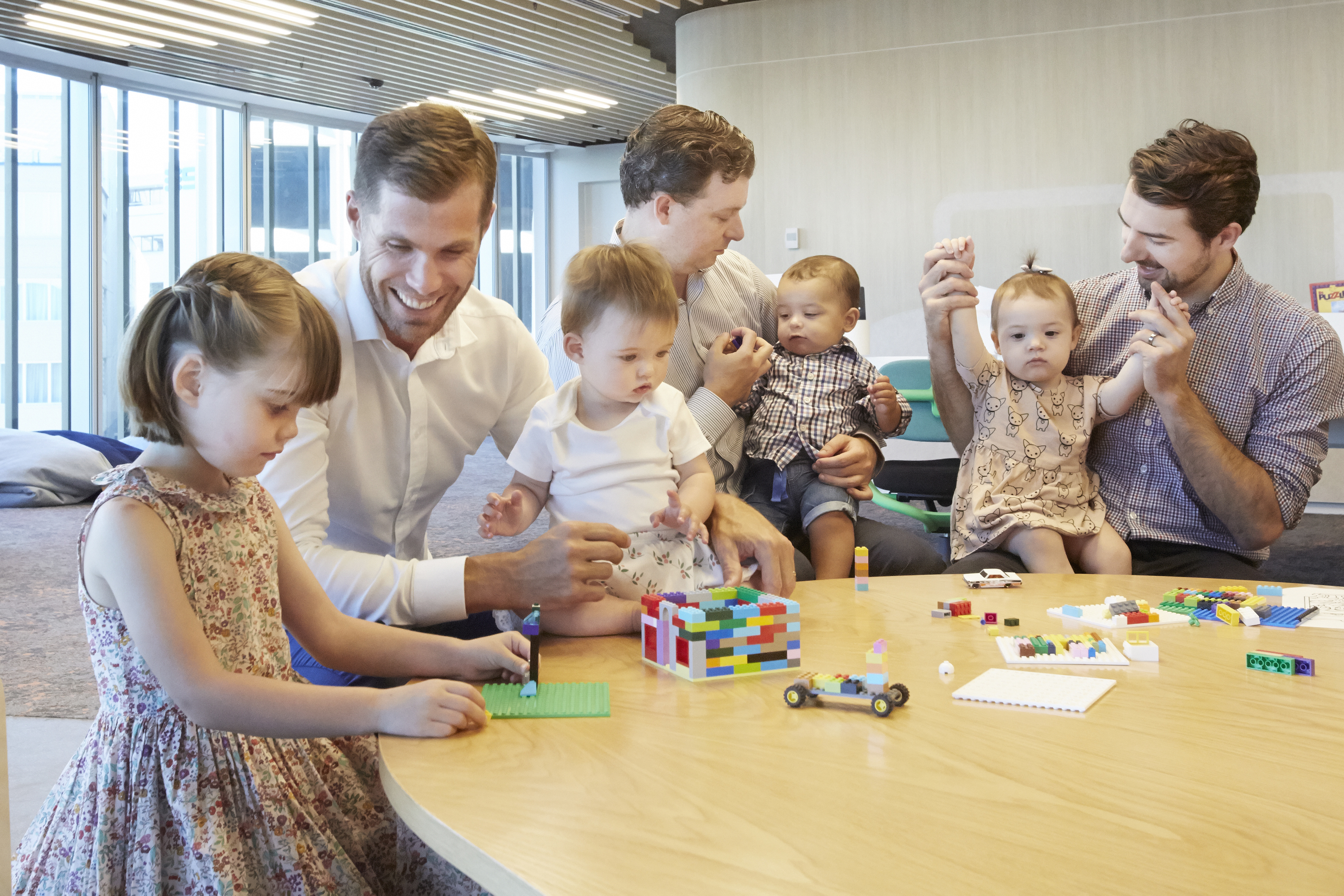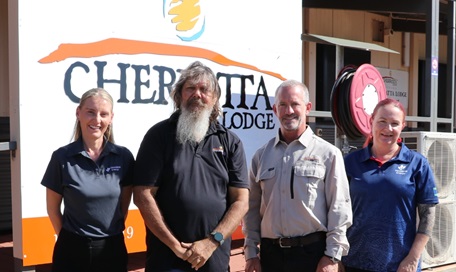Dads’ home work
Woodside supports men and women balancing their careers and caregiving, and four male employees describe their experience taking primary carers’ leave to look after children.
Nobody believes looking after kids is child’s play, or that it should be exclusively women’s work.

But statistics show there is still much to be done before Australia narrows the gap in who plays the role of main carer for their very young children.
The Commonwealth Government’s Workplace Gender Equality Agency reckons women account for 94.9% of all primary carers’ leave utilised, men only 5.1%.
Woodside’s Parental Leave Policy, in accordance with our Inclusion and Diversity Policy, is available to all employees who meet the relevant length of service criteria, regardless of their sex, relationship status, sexual orientation, gender expression or identity.
Anna Natalotto, manager inclusion and diversity, says the company wants to encourage a workplace culture that supports men and women to balance caregiving and their careers.
“Having parental leave entitlements and flexible working arrangements available to all employees ultimately increases engagement levels, well-being and enables gender equity at work,” Anna notes.
Vice president People and Global Capability (P&GC) Jacky Connolly’s family has experienced the benefits of her partner being primary caregiver of their children.
“Having my husband Bram be at home with the kids for 12 months was a huge help for our family when we returned from overseas and I was getting established in my new role at Woodside,” Jacky relates.
“Regardless of the gender of the primary caregiver, the value of the time parents give in a child’s early developmental years is priceless.
“I’m proud that Woodside’s workplace culture and its leave policy align to the importance of family.”
At Woodside, increasing numbers of men, supported by their managers and P&GC, are taking advantage of parental leave to become the main carer for their young children.
When commissioning team leader Stephen Rogers and wife Tam discovered (only seven months after the birth of their first) they were expecting their second child, they knew they had to do things differently second time round.
“First time round was madness,” Stephen says bluntly.
“I only took a couple of weeks leave but we also moved house and lived in a renovation when Theo was born and Tam tried to wind back the business she ran with the aim of ramping it up again when she was ready.”
Baby Number 2, Sia, changed all that.
“So, we concocted a different plan for Sia and I decided to take parental leave when she was six months old and be the stay-at-home dad for six months so Tam could concentrate on her business,” Stephen explains.
At Woodside, he approached his manager and P&GC, and reports everybody was very supportive.
He ended up taking seven months’ leave.
“Super hard and I never found the ‘off button’, but I loved it,” he recounts.
“I struggled at first because I was still in the mindset of planning my week, setting targets and deadlines. The kids quickly ended that and I realised I was working to their schedule, not the other way round.
“The biggest lesson I learned was to slow down, be in the moment and let my mind be elsewhere.
“This was when I had the best connections with my kids, and when I began to take notice of small things that I had probably been ignoring or not noticing for years. This was huge for me.
“Plus, it was a godsend for Tam, allowing her time for her work and to have time for herself.”
Of course, Stephen – like many Woodsiders – has experienced working at home with young children as the COVID-19 pandemic has profoundly changed work habits.
“When working from home the kids tend to bomb into my office area a few times a day - they aren’t the least bit worried if I’m on a Webex or not,” he says ruefully.
“Such is life with little ones.
“I have enjoyed it, however. I can play with my kids more at times during the day, and there’s no time lost commuting, or ironing work shirts, so it’s not all bad.”
Mike Willacy, rig stream lead in Subsea and Pipelines, says he was nervous about asking for parental leave even though his line manager, general manager and other function leads were active proponents of flexible work.
“I still had reservations that taking parental leave would be detrimental to my future career opportunities,” Mike confesses.
“I bounced the idea off peers and received feedback ranging from ‘that’s a laugh’ through to ‘that’s awesome – thanks for making this the norm for future fathers’.”
Indeed, culture and financial reasons, Mike suggests, are the two major obstacles to men taking parental leave.
For himself, being a full-time parent to Violet (6 months) and May (4) was “harder and more rewarding than I’d ever imagined,” he reports.
The upside? “It has helped me make a step-change in being a more present, empathetic, connected and contributing father and partner,” Mike replies.
He adds the immediate impact was enabling his wife, Nat, to return to work as a school deputy principal six months earlier than originally planned to focus on her career, development and also improve her fitness and networks.
“The long-term impact is an understanding of the domestic load and seeking to create better equity in parenting and domestic duties as we both return to work,” Mike says.
“For every father who doesn’t take parental leave they create a parallel obligation for the other parent to take leave. I’d like to thank Woodside for enabling fathers to take primary carers leave. This is a phenomenal opportunity for which my family and I are very grateful.”
Contracting and Procurement adviser Tyrone Handley says: “I’m really fortunate that I could take this opportunity to bond with my son and do my fair share in raising him.
“I can appreciate that there’s hesitation with new dads taking this opportunity.
“However, I would strongly encourage other fathers to take it and challenge the assumptions as to why they cannot be primary carers.”
Read the full Q2 2020 issue of Trunkline here.



